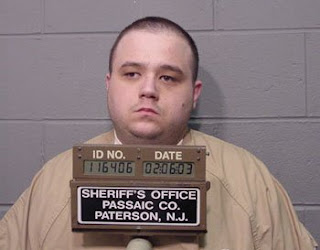At its core, the movie is about how the professor, who is white and nearing retirement, is rejuvenated by his encounter with the young, immigrant couple. But the professor’s personal growth was not at all my focus as I watched “The Visitor.” I was too taken with Gurira, with watching the beautiful, intricate jewelry that hung from her ears and the colorful garments that made her Snickers-colored skin look all the richer, to make the professor’s metamorphosis my first priority.

Watching “The Visitor” I was reminded of a scene from Toni Morrison’s novel Tar Baby. A light-skinned black model named Jadine is stunned by an African woman she sees while grocery shopping. She thinks:
“The vision itself was a woman much too tall. Under her long canary yellow dress Jadine knew there was too much hip, too much bust…, so why was she and everybody else in the store transfixed? The height? The skin like tar against the canary yellow dress...? She would deny it now, but along with everybody else in the market, Jadine gasped…Just a quick snatch of breath before that woman’s woman—that mother/sister/she; that unphotographable beauty—took it all away.”
Unlike Jadine, I’m not going to deny that I was mesmerized by “the vision” of a beautiful African woman, despite being African myself (I have a Nigerian father and an African American mother). After watching “The Visitor,” I’m still trying to process exactly why I had this reaction, and so far I’m pretty sure it’s due to a combination of factors. Firstly, I was struck by the simple appearance of an African woman in a film set in the West. It’s rare to see Africans on the silver screen in a setting outside of Africa, let alone see them not play characters who are victimized by war, AIDS or another atrocity. And even in films set in Africa, the women are usually relegated to the role of wife and, thus, never allowed full character development.
“The Visitor” turns this dynamic on its head to a degree. Yes, Zainab, the character Gurira plays, is a significant other. The movie mostly chronicles her love for her boyfriend, Tarek, but Zainab is developed in the sense that the audience knows about her passion—fashion—that she is introverted and cautious, yet capable of reaching out, that she’s not the type to bite her tongue when her boyfriend grates on her nerves and that she is annoyed by the customers who buy jewelry from her but have no clue about her homeland.

And while Zainab is a significant other, it’s important to note that she’s not a wife, but a love interest. The fact that she’s portrayed as sexually desirable is subversive simply because, as Morrison notes in Tar Baby, African women, mother/sister/she women, the genuine article, if you will, is not supposed to be desired. Such women are supposed to be “unphotographable.” So, yes, seeing the dark-skinned Gurira, with less than an inch of hair on her head, portrayed as anyone’s love interest, especially the love interest of a non-African man, challenges all sorts of cultural norms.
Interestingly enough, though, McCarthy doesn’t make a huge deal of the interracial romance between Zainab and Tarek, both of whom are Muslims. The most attention given to the interracial pairing is during a scene in which Tarek’s mother meets Zainab for the first time and is surprised that she is black and “very black” at that, but that is all. The mother’s only objection, and it is an implied objection, about Zainab’s relationship with her son is that the two were living together, a religious no-no. Overall, the characters’ Muslim background and immigrant status seem to outweigh their racial differences. And, in a post-9/11 world, a world in which the fact that Barack Obama’s estranged father was born into a Muslim family is a liability, it’s definitely refreshing to see Muslims shown as three-dimensional, loving people. It’s also refreshing to see McCarthy challenge the trend of depicting interracial couples as if they are exclusively made up of one white and one non-white person.
That said, “The Visitor” is by no means perfect. A cogent argument can be made that its immigrant characters function solely to bring about the white professor’s personal transformation. But the ground the film breaks throughout more than compensates for this. So, if you haven’t already, catch a screening of “The Visitor.”



















